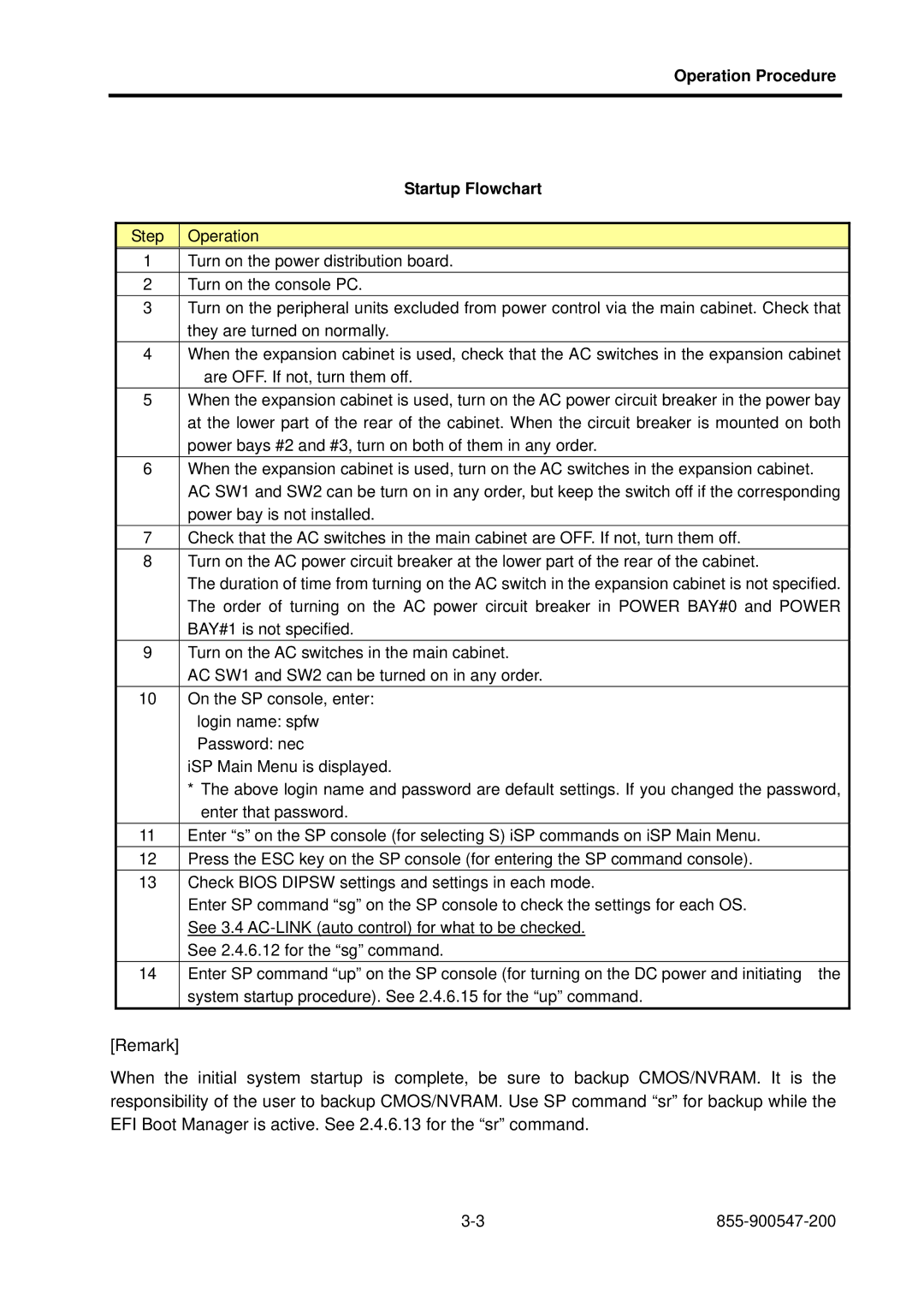Operation Procedure
| Startup Flowchart |
|
|
Step | Operation |
1 | Turn on the power distribution board. |
2 | Turn on the console PC. |
3 | Turn on the peripheral units excluded from power control via the main cabinet. Check that |
| they are turned on normally. |
4 | When the expansion cabinet is used, check that the AC switches in the expansion cabinet |
| are OFF. If not, turn them off. |
5 | When the expansion cabinet is used, turn on the AC power circuit breaker in the power bay |
| at the lower part of the rear of the cabinet. When the circuit breaker is mounted on both |
| power bays #2 and #3, turn on both of them in any order. |
6 | When the expansion cabinet is used, turn on the AC switches in the expansion cabinet. |
| AC SW1 and SW2 can be turn on in any order, but keep the switch off if the corresponding |
| power bay is not installed. |
7 | Check that the AC switches in the main cabinet are OFF. If not, turn them off. |
8 | Turn on the AC power circuit breaker at the lower part of the rear of the cabinet. |
| The duration of time from turning on the AC switch in the expansion cabinet is not specified. |
| The order of turning on the AC power circuit breaker in POWER BAY#0 and POWER |
| BAY#1 is not specified. |
9 | Turn on the AC switches in the main cabinet. |
| AC SW1 and SW2 can be turned on in any order. |
10 | On the SP console, enter: |
| login name: spfw |
| Password: nec |
| iSP Main Menu is displayed. |
| * The above login name and password are default settings. If you changed the password, |
| enter that password. |
11 | Enter “s” on the SP console (for selecting S) iSP commands on iSP Main Menu. |
12 | Press the ESC key on the SP console (for entering the SP command console). |
13 | Check BIOS DIPSW settings and settings in each mode. |
| Enter SP command “sg” on the SP console to check the settings for each OS. |
| See 3.4 |
| See 2.4.6.12 for the “sg” command. |
14 | Enter SP command “up” on the SP console (for turning on the DC power and initiating the |
| system startup procedure). See 2.4.6.15 for the “up” command. |
[Remark]
When the initial system startup is complete, be sure to backup CMOS/NVRAM. It is the responsibility of the user to backup CMOS/NVRAM. Use SP command “sr” for backup while the EFI Boot Manager is active. See 2.4.6.13 for the “sr” command.
